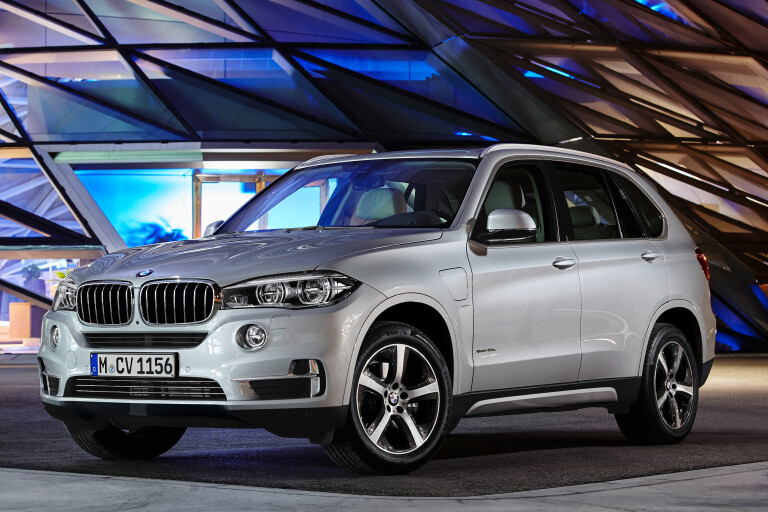
THE BMW X5 Drive40e is the company’s first production plug-in hybrid that’ll draw swords with the Audi Q7 e-tron and Mercedes GL-Class eco-warriors. It takes technology developed for BMW’s ‘i’ sub-brand, currently two cars – the Wheels COTY-winning i3 city car and the BMW i8 sports car. These two cars, sold as full-electric (i3) and/or range-extenders (i3 REX and i8), have borne the development cost and experiences that should give the X5 Drive40e a leg-up.
The X5 is powered by BMW’s new generation of modular engines, which see a combustion chamber of 500cc for each cylinder multiplied by three or, in this case, four cylinders. The Swedes have followed the same idea with the new Volvo XC90 SUV that arrives in Australia later this year.
The 1997cc turbocharged four-cylinder engine, which is positioned low and as far back as possible in the X5’s engine bay, makes 180kW and 350Nm, sent through the eight-speed ZF automatic transmission that’s already used across the BMW model range, from its entry-level 1 Series though to flagship 7 Series products.
However, for the hybrid X5, the transmission houses an 83kW/250Nm electric motor linked to a lithium-battery pack located under the floor of the boot and behind the rear axle.
The battery pack eats into boot space, though, with the usual X5’s 1870 litres reduced to 1720 with the tri-fold rear seat upright.
The petrol engine and electric motor produce a combined 230kW/450Nm through all four wheels (even in electric mode) and gives the 2230kg X5 – the heaviest of the large SUV line-up by only 40kg – an electric-only range of 31km after a charge time of almost four hours.
As the masters of extras-selling, BMW is also pushing its own 3.5kWh wall-mounted charger that cuts the recharge time to 2.5 hours.
The only other plug-in hybrid SUVs on sale here are the Mitsubishi Outlander PHEV with a charge time of five hours, and the Cayenne S E-Hybrid with an almost three-hour recharge time – drop that to 1.3 hours if you buy its special under-bonnet charge unit.
That 31 km range is not as far as the Mitsubishi or the Porsche, yet it delivers a ‘power boost’ to help achieve a claimed 6.8sec 0-100km/h time and a limited 210km/h top-speed – good numbers compared with the 306kW/590Nm Porsche’s 5.9sec and 243km/h. The eco-X5 also comes with an adaptive chassis as standard, too, although shift-paddles are an option.
The all-important fuel claim is a best of 3.3L/100km (EU figures). That compares to the most parsimonious X5 currently on sale in Australia, the sDrive 25d with its 2.0-litre turbo diesel, which claims 5.8L/100km, and undercuts the Porsche Cayenne hybrid’s official Australian fuel use figure by 0.1L.
The X5 differs significantly from the Audi Q7 Hybrid, with the Audi using a 3.0-litre twin-turbo V6 and electric power for a stonking 278kW and 699Nm, yet both may be hampered as left-hand-drive only models – meaning neither are a sure bet for Aussie showrooms.
“We would like to have that vehicle [the X5 Drive40e] as it will continue to support out low-emissions vehicle program,” a BMW spokesperson told Wheels. If it does arrive in Australia, it won’t be here until early 2016, with the Audi Q7 e-tron arriving no sooner – if at all.

COMMENTS